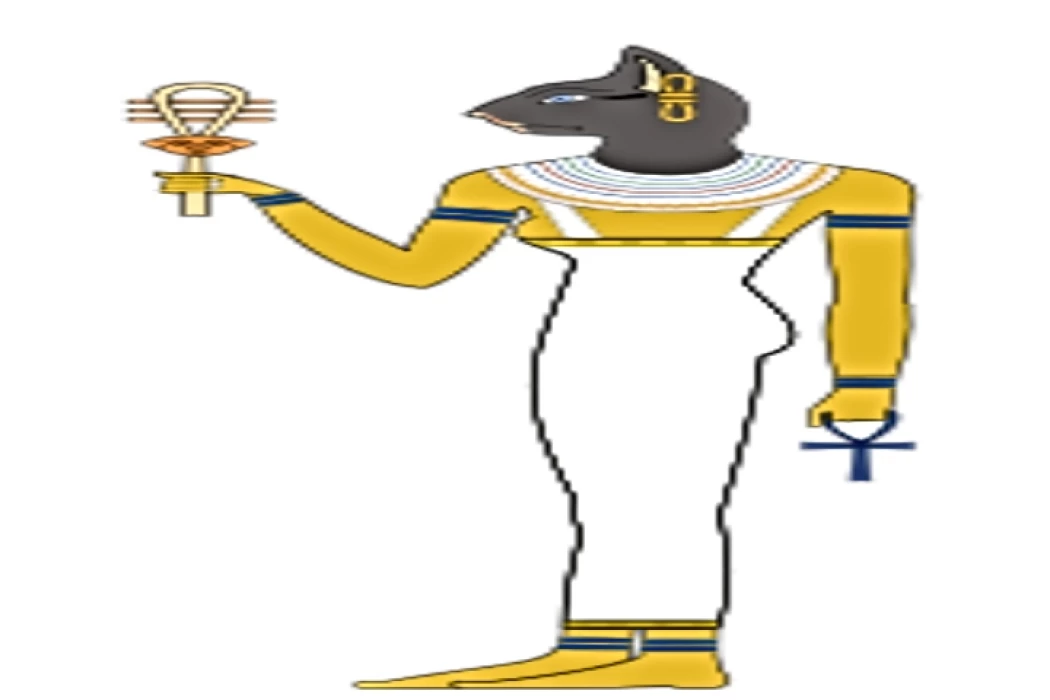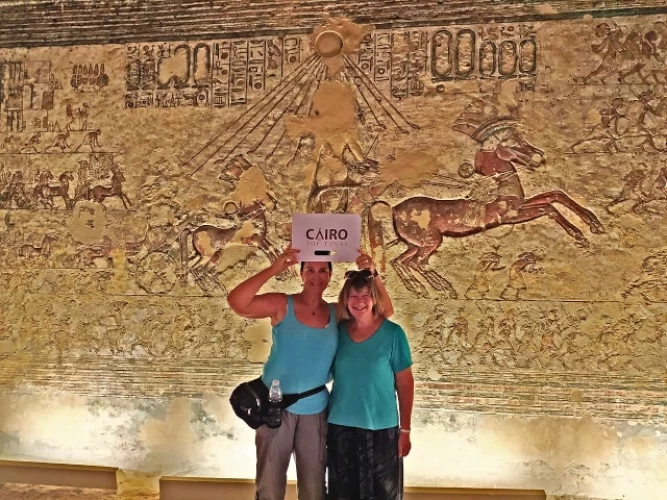
Bastet ( God of ancient Egypt )
Worshiped in the form of a meek cat, she was merged with the idol Sekhmet in the modern state, where Sekhmet is represented in the form of a predatory lioness. When Bastet gets angry, she becomes Sekhmet, taking revenge on enemies and those of poor character.
The ancient Egyptian domesticated the cat because he noticed that she was catching mice that enter the grain silos, eating and spoiling them. The ancient Egyptians also bred them at home. When she died, he would embalm her as he embalmed his dead. One of the large tombs containing about a million mummified cats was found in Egypt, very carefully and tightly mummified. I have great respect for her.
Her acting
The lioness was also sacred to the ancient Egyptians, and her name was Sekhmet. Therefore, researchers are confused about reading ancient Egyptian texts; it is Bastet or Sekhmet. In some texts, Bastet's name appears accompanied by the figurative symbol of her as a sitting house cat.
Its importance
It was painted on the wall of the temple of Kom Ombo, Egypt. She also represented joy, dancing, music, feasts, and had such non-Meek qualities as anger and predation. With historical development, in later times it was associated with the predatory idol Sekhmet, the lioness, who represents the predatory aspect of Bastet when angry. She was also considered in Heliopolis as a daughter of Atom.
During the reign of the ancient Egyptian kingdom, Bastet was considered the goddess Hathor (Hathor), and she was worshiped in Memphis by the goddess Sekhmet. During the Middle Dynasty, it was represented by the goddess Mut. People used to keep cats in houses. When a cat died, its owner expressed his grief by shaving the eyelids of his eyes (according to what Herodotus wrote).
Places of worship
Embalming the corpses of cats was very widespread. The priests of Bastet raised cats and offered them to people for the purpose of sacrifice. And when one of the people buys a cat from her, the priest kills it, and then a group of priests embalms it as they embalm a human being. Depending on what the buyer paid, the priests hand him a large or small mummy, and he prepares a tomb for her. That was a victim of the goddess Bastet.
And for one of the people to please the goddess Bastet in a special tribute, he would buy some cats. Recently, an X-ray examination was conducted on the dead cats found in a large cemetery in the valley of the Kings, and he was surprised that about a third of the dead cats did not contain a mummified cat and contained only several bones. To date, researchers do not know whether priests cheat people or whether cats are less often found.
The killing of a cat outside a place of worship by a non-priest was a crime for which the perpetrator could be severely punished
Bastit feast
The ancient Egyptians celebrated Bastit, a feast celebrated by drinking beer (sometimes called the feast of drunkenness), having fun, and dancing with their beer drinking sessions. This holiday was mentioned by Herodotus in his manuscript (Herodotus II (II 60.
There is a much difference between the Sekhmt god and the Bastet god they have the same represented form but with a different mission so the lovely Bastet goddess of pity and mercy but Sekhmet is the goddess of war and power.
Bastet according to the ancient Egyptian religion is Atum`s wife and She also worshiped "Bastet" in Upper Egypt, where she was likened to or represented by the goddess "Death", the wife of "Amun" in "Thebes".
The relationship between Bastet and Hathor
The gods also had a relationship with the gods Hathor, each of the gods of fun, and Bastet sometimes represented the delegation of her hand rattling in the form of the head of Hathor, and the worship of the gods Bastet merged with the worship of the deities of Hathor in the era of the Old Kingdom, as the gods depicted Hathor on the walls of the temple of King Bibi I (the family) Sixth),
then Hathor appeared standing next to King Bibi the First, and it seems that this king was interested in worshiping the gods Hathor in the area of Basta, next to her main idol, the gods Bastet, and the gods were depicted on a stone found in the cabin of the aforementioned temple, and it can be considered a metaphor for this. The inscription to the local deities Bastet.
The god Hathor was famous for being Sekhm when she was angry, and she used to be calm and cheerful, and there was a similarity between the feast of the gods Bastet and the feast of the goddess Hathor, which was called:
The Feast of Resurrection. Just as the gods Bastet merged with the gods, Hathor, since the era of the Old Kingdom, as we have already indicated, the gods took the status of the gods to Hathor from the Middle Kingdom era, to merge with the gods Bastet, so the worship of the gods Bastet was linked to the worship of the god's Death in Thebes, so the gods were called Bastet:
the gods are death Bastet, and represented while placing on her head the feathers of the god Shu and two horns between them, the sun disk.
The meaning of Bastet
Her name is derived from the name of the city of Bast (Bubast (Bubastis in Greek)), the center of her cult in the 18th region of Lower Egypt, and it is likely that her sacred animal was not originally the cat but the lioness. She was also called "Lady of Basta" in connection with her place of worship, a title that remained in the texts until the end of ancient Egyptian history.
The goddess Bastet was depicted as a cat-headed woman holding in one hand the shakshikha of Hathor and in the other holding a basket. She is also sometimes depicted as a cat. The goddess Bastet is usually depicted as a seated female lioness, or as a female human figure with a lioness or cat head, and on some Second Dynasty steins she appears as a woman with a lioness head. Bastet has been associated with the cat since the Middle Kingdom.
The gods are death Bastet, and represented while placing on her head the feathers of the god Shu and two horns between them, the sun disk.















